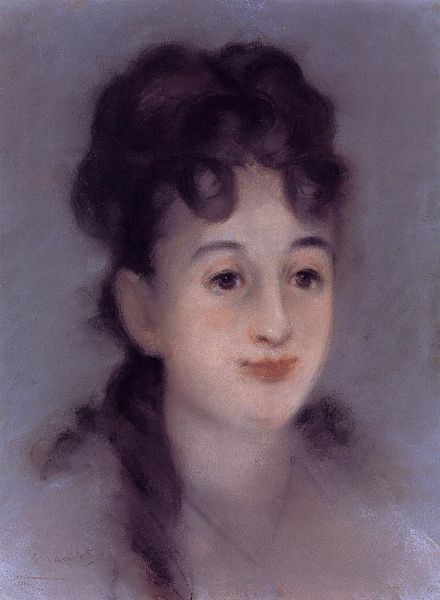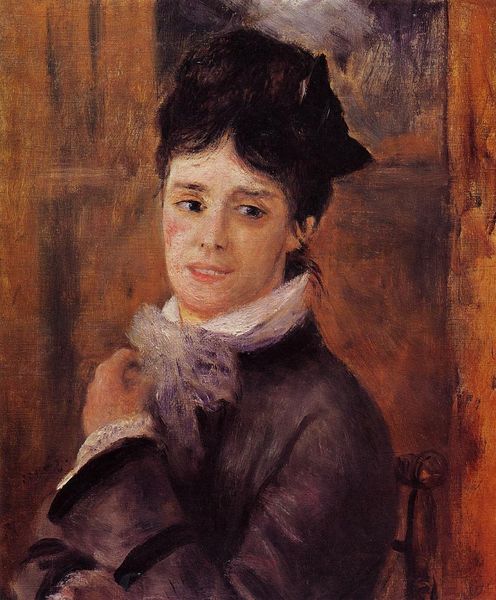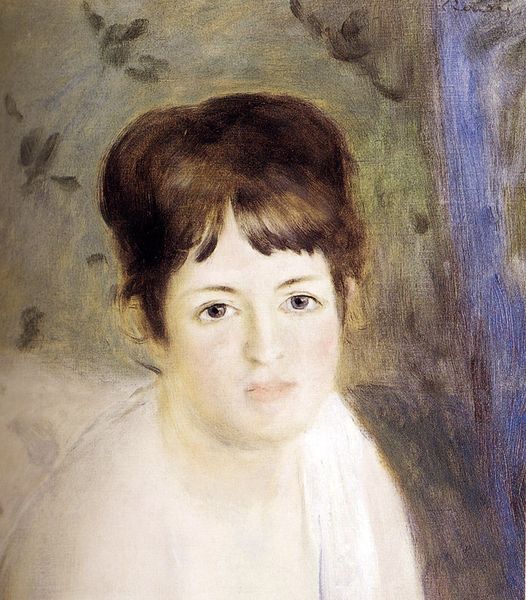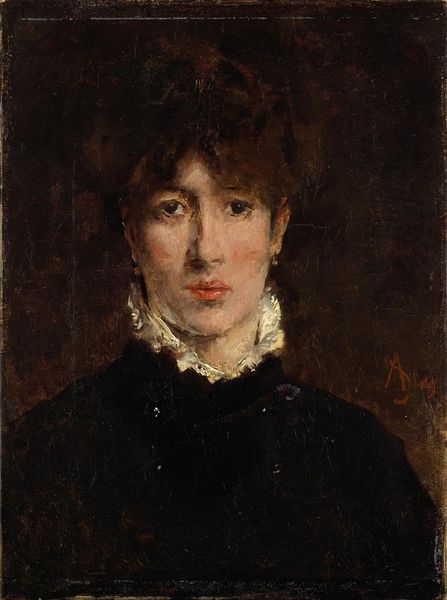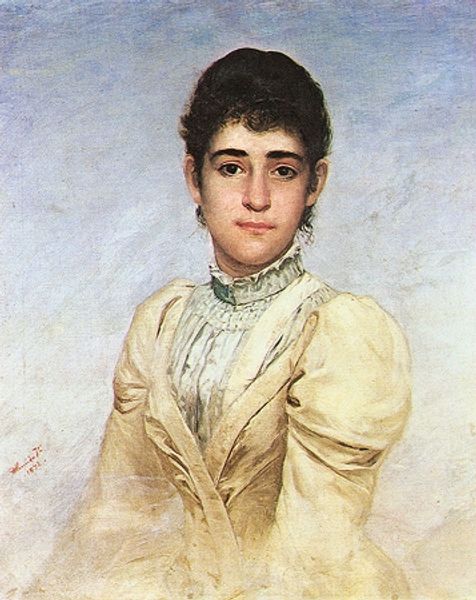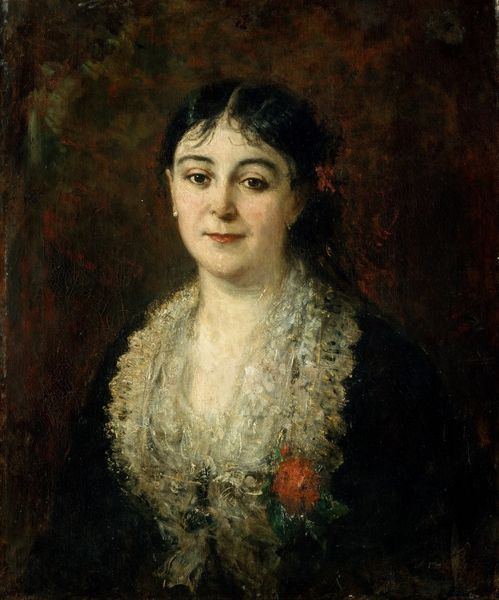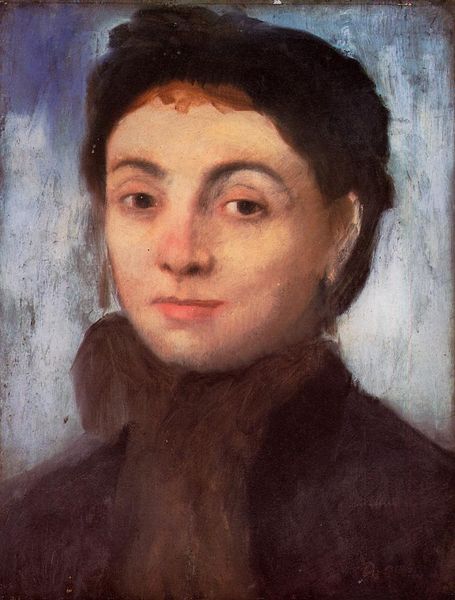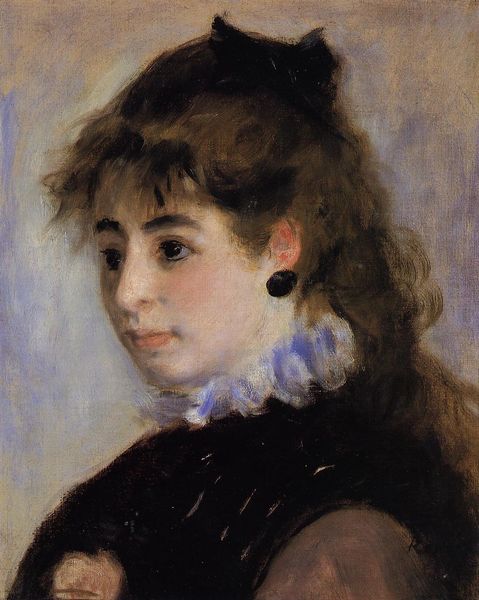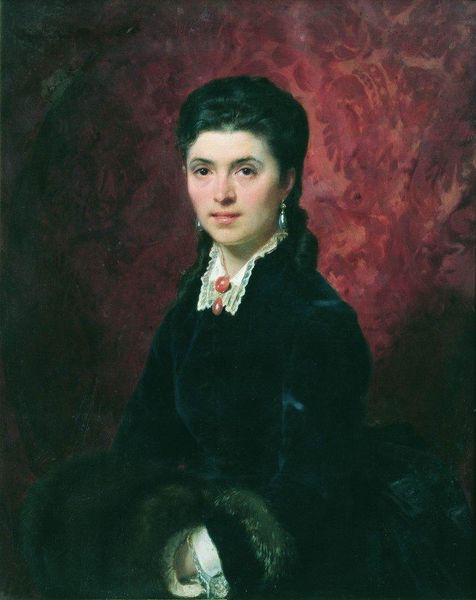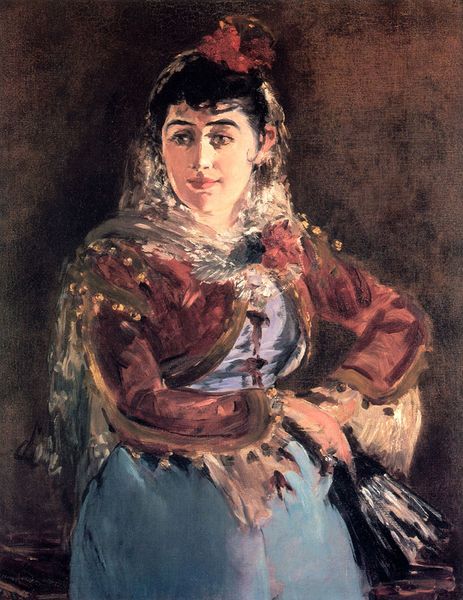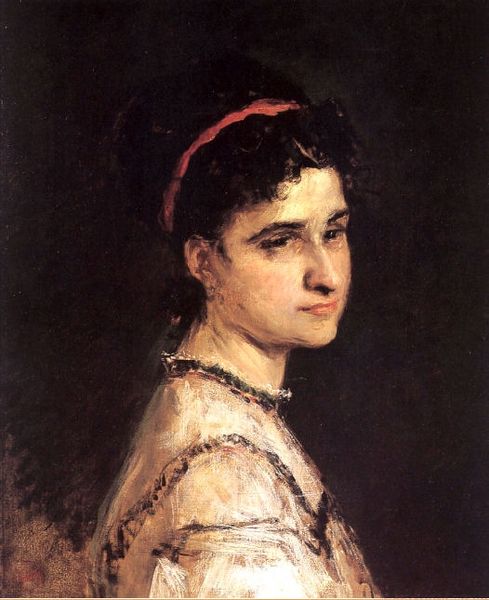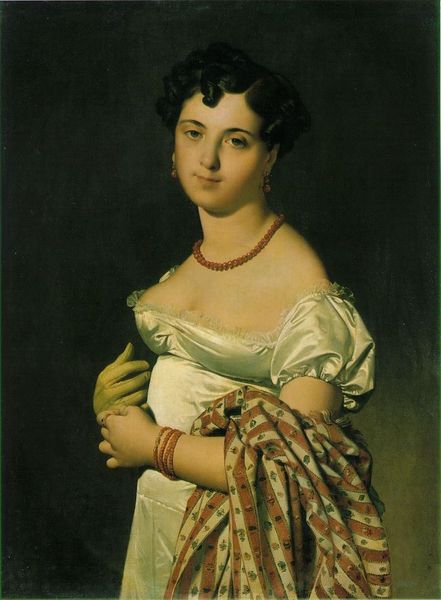
painting, oil-paint
#
portrait
#
painting
#
impressionism
#
oil-paint
#
intimism
#
genre-painting
Copyright: Public domain
Editor: Here we have Renoir's "Woman with a Rose," painted in 1876, using oil paints. The lady's serene expression is captivating. How do you interpret this work, especially regarding its materials and the society it depicts? Curator: The rough, broken brushwork typical of Impressionism serves not just aesthetic purposes but also reflects the burgeoning industrialization and the increasing speed of life during that era. The quick, visible strokes can be seen as a kind of “mass production” of painting, contrasting with the smooth, detailed surfaces valued in academic art. Editor: Mass production in painting, that’s an interesting idea. How does that relate to the woman herself? Curator: Consider her adornments - the rose, the earrings, even the application of paint to depict the texture of her clothing. These speak to emerging consumer culture. The painting itself, as a commodity, participates in that same market. Is it a portrait of a specific person, or does she stand in for the aspirational desires of the growing middle class? How might the availability and affordability of materials, like oil paint itself, impact artistic choices? Editor: That’s fascinating. I hadn’t considered the connection between the artistic process and consumer culture at the time. The materials and their availability really shape our understanding. Curator: Exactly! Analyzing the painting through this lens pushes us to think about art not just as an aesthetic object, but as a product of—and a participant in—a specific socio-economic reality. It reveals the labor, the materials, and the mechanisms of consumption at play. Editor: I will certainly view impressionist works in a new light now! Thanks.
Comments
No comments
Be the first to comment and join the conversation on the ultimate creative platform.
